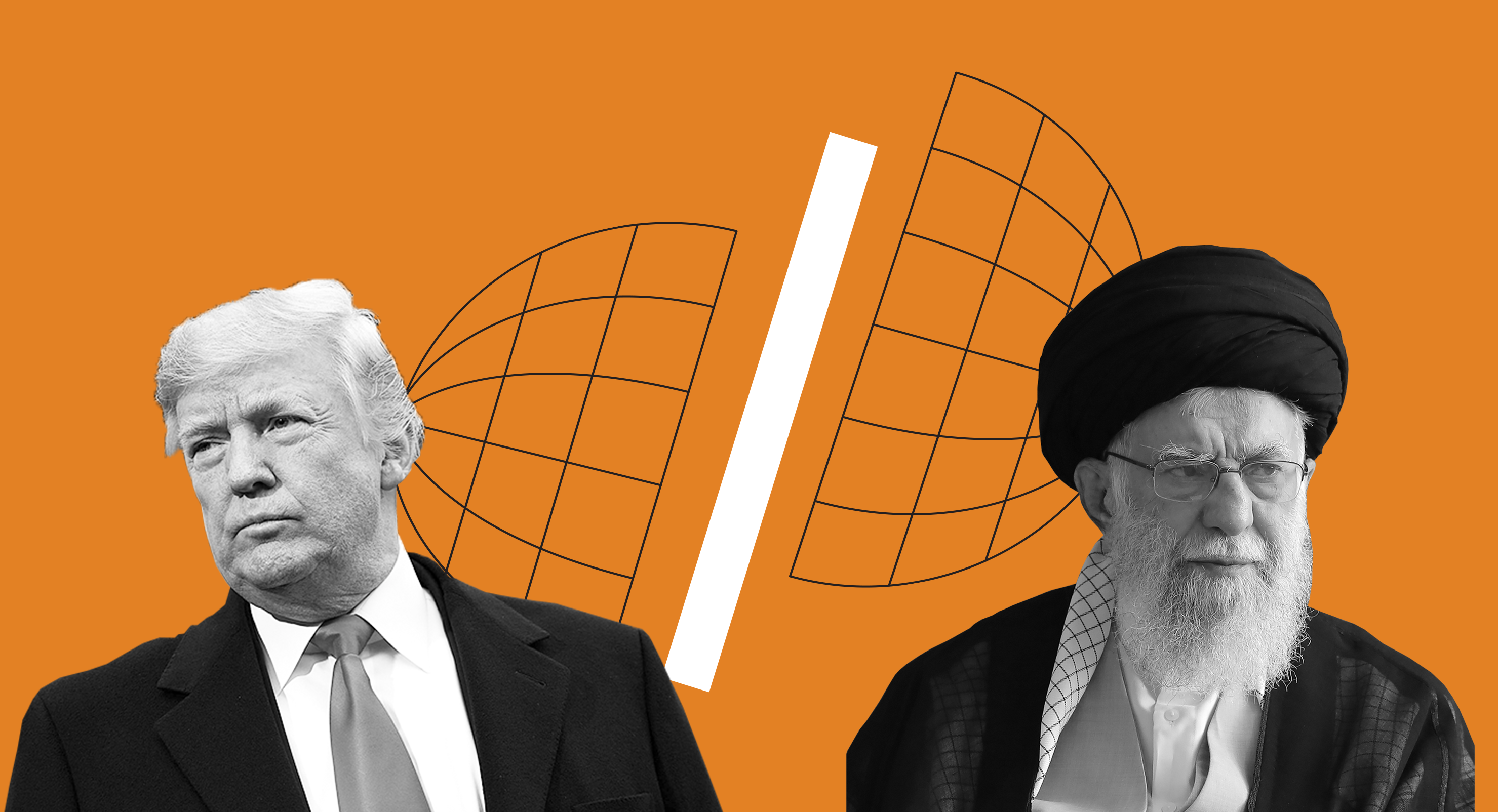This piece is part of a Carnegie series examining the impacts of Trump’s first 100 days in office.
Since the 1979 Iranian Revolution, relations between Tehran and Washington have been severed. The Islamic Republic’s identity has been premised on opposing the United States, often referring to it as the “global arrogance.” This hostility is driven not only by ideological differences but also by self-preservation, as the Islamic Republic, like many revolutionary dictatorships, needs an external adversary to maintain internal cohesion and justify its rule.
During the four-decade tenure of Supreme Leader Ayatollah Ali Khamenei, Iran has largely sought to avoid both peace and war with the United States. President Donald Trump’s second-term presidency, however, is sharpening these choices. What makes Trump’s approach unsettling for Tehran is his desire to directly negotiate and “do a deal”—to curtail its nuclear program—while threatening military action if a deal is not reached. This approach challenges Iran’s long-standing policy of wanting to avoid both direct confrontation and direct engagement with the United States.
Tehran’s advancing nuclear program has only intensified the urgency of Trump’s approach. In addition to his threats of military action, Trump’s “maximum pressure” economic sanctions campaign aims to significantly reduce Iran’s primary source of revenue—oil exports. Tehran has long been wary of making any concessions under public threat, fearful that doing so could encourage, rather than reduce, the threats against it.
As of spring 2025, however, Tehran and Washington have reentered nuclear discussions. While mutual hostility endures and the technical details of compliance and sequencing remain complex, both sides appear to have the political will to reach a new agreement. For Tehran, this engagement reflects a potential temporary, tactical shift rather than a strategic realignment.
During Trump’s first term, Iran consistently rebuffed his overtures for dialogue with then–president Hassan Rouhani, especially after Trump’s withdrawal from the 2015 Iran nuclear deal—known as the Joint Comprehensive Plan of Action (JCPOA)—and the imposition of crippling economic sanctions. Trump’s assassination of General Qassem Soleimani in January 2020 further entrenched Iran’s stance, pushing any chance of direct dialogue further out of reach.
Trump, therefore, presents both great risks and potential opportunities for the Islamic Republic. To a regime suffering under onerous economic sanctions, Trump has greater standing to sell a diplomatic deal with Tehran to Israel and congressional Republicans, two groups that vociferously opposed the JCPOA. Yet for a regime whose identity has been based on opposing the United States, Trump’s actions could push Iran either toward direct diplomatic engagement or into a more overt confrontation—both outcomes it has historically resisted.
Beyond the nuclear file, Iran also sees in Trump an opportunity to advance its broader strategic agenda. Its objectives are straightforward: evict the United States from the Middle East, delegitimize Israel, and collaborate with nations and nonstate actors sharing its opposition to the U.S.-led global order. Trump’s instincts broadly advance two of these three Iranian aspirations and may inadvertently further the third.
Trump has actively sought to dismantle the political, economic, and military alliances that have upheld the U.S.-led world order since World War II—an order Tehran is keen to eliminate. His desire to reduce America’s military footprint in the Middle East, particularly in Iraq and Syria, directly aligns with Iran’s objectives. And although Trump has positioned himself as the most pro-Israel president in U.S. history, his implicit endorsement of the maximalist policies favored by Israel’s far right—such as the mass expulsion of Palestinians in Gaza and even the West Bank—could serve to further delegitimize Israel in international public opinion.
Iran, despite reportedly plotting to assassinate Trump to avenge Soleimani’s death, also sees in Trump’s presidency an opportunity to further polarize America internally and blunt its soft power and global influence. Tehran applauds Trump’s efforts to shutter Voice of America Persian-language broadcasts and cut U.S. foreign aid and democracy-promotion programs, and it encourages his instincts to withdraw American forces from the region.
From the 2003 U.S. invasion of Iraq until the 2023 Hamas attacks on Israel, Iran had become the Middle East’s ascendant power by effectively filling power vacuums created by the removal of Saddam Hussein as well as the 2011 Arab uprisings. Iran’s Axis of Resistance flourished amid instability in Syria, Lebanon, Iraq, Yemen, and Gaza—states whose disorder Iran exploited and exacerbated.
Yet Iran’s support for Hamas’s October 7 attack backfired dramatically. Israel’s severe retaliation against Hamas and Hezbollah directly contributed to the collapse of Tehran’s key ally, Syrian leader Bashar Assad. Iranian proxies in Iraq and Yemen also now find themselves weakened. Despite Trump’s general reluctance toward Middle Eastern military entanglements, he has conducted strikes against the Houthis, who threaten regional stability and global trade.
Nevertheless, Tehran is not likely to passively accept its reduced regional influence. The regime and its proxies will use all available means—including political assassinations—to disrupt Syria and Lebanon’s transitions into stable, post-Iran political orders. Efforts to destabilize Jordan will likely continue as well.
Though Iran’s regional capacity has been diminished, its resolve remains strong. Tehran hopes that Trump’s policies will hasten the decline of the U.S.-led world order, creating new opportunities for Iran to advance its strategic ambitions.
Read more from this series, including:





.jpg)


